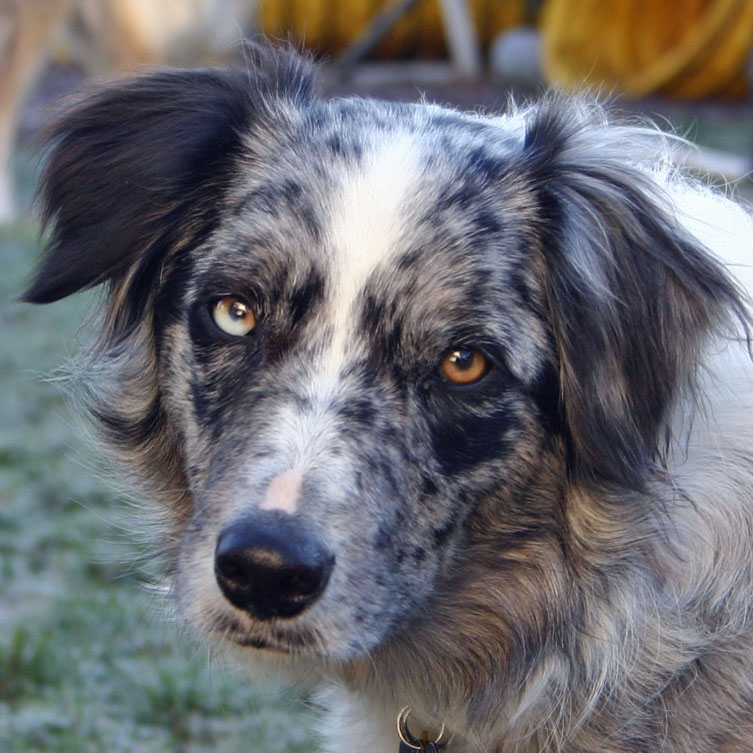Handling a Sore Dog
SUMMARY: What to do when your dog is sore?
I'm a terrible patient in some ways--not very patient, really. When I'm injured, I tend to push the limits of what doctors suggest. Thank goodness, modern human medicine now wants you to do as much as you can as fast as you can, rather than resting abed.
So, for example, if I've badly sprained an ankle (enough to go see the doctor), and confirmed that it's not broken or torn, and the advice has been to rest it for [some period of time], I rest it until I can run on it... a day? three days? (Of course I have to keep testing it, not resting it, to see whether I can move without, like, screaming.) I don't seem to have done myself any serious damage this way. Sure, it's not 100% when I start being active again, but if I don't move, I put on weight (it lurks in the shadows, waiting for any sign of weakness, and then LEAPS onto my hips at a moment's notice!). And maybe I have to ice it and take NSAIDs for longer than I would if I had given it the full rest, but in so many ways I feel better by pushing the envelope.
(Aside: OK, really, how much work is pushing an envelope? I mean, really!)
When my knee was so screwed up that I could barely walk, I did listen to my physical therapist when she said "you are scratching yourself from the trial this weekend and you are NOT running, NOT!" When the orthopedist said, "I can't say that I give my blessings for you to go to the Nationals and run your dogs, and I don't think it's a good idea, but I can't stop you from doing something that you want to do, so [fill in assorted medical advice]," I did in fact go to the nationals and I did run my dogs and I borrowed a bicycle to get around, and I did not suffer greatly for it except that it was damned dull sitting in my chair icing my knee constantly when there was so much to do and see that I couldn't [do or see]. But that was possible because the knee had improved somewhat in the preceding 2 or 3 weeks so that I COULD, in fact, run on it without, like, screaming. And, furthermore, Tika's team made it to the finals and she took home an individual placement ribbon, her first ever. So what did that teach me?
But that's not what I came here to talk about.
So, now I have, in my care, lovely furry athletic beasts who are in much better shape than I am and who rely on me for intelligent, well-reasoned choices about their care. Ha! I try to be a better patient for them than I am for myself, but I am of mixed feelings, because failing to follow my own medical advice to the letter seems, in fact, to have been good for me.
So, what to do when the dogs are hurtin'?
When Jake, at nearly 10, first came up sore--suddenly so painful that he couldn't even go up stairs--x-rays proved arthritis. Vet prescribed 6 weeks of complete rest. Six weeks! On a wild and crazy dog who ran full out chasing tennis balls for 20-30 minutes daily! He got full rest for maybe 3 or 4 days, and then very limited exercise for a couple of weeks after that and then we did just a little tiny bit of class at a lower jump height, and all that time he showed no signs of pain, none! OK, he was on anti-inflammatories, too, for at least a couple of those weeks, and I knew that, and I was cautious. But not six weeks worth of cautious. And this 17.75"-tall dog continued to jump 22" in USDAA for another 18 months, then jumped 16" for another 3 years (eventually only one run a day) until he died at 15. He still jumped at 12" beautifully with no signs of pain.
So now Tika, just 7 this February, has been turning up sore more and more often. What's the right answer? How to treat her? I know that active dogs are at least as bad as active people--they don't care if they're in pain as long as they're moving moving moving! Until the pain gets to be too much for them. I know that they don't necessarily show it until it's pretty thorough.
I can't afford regular chiropractic visits (for myself or for the dogs). Some people swear by it, since dogs can't and/or won't tell you when they're sore, you need to do some massage and hands-on evaluation of all their joints on a regular basis, whereas with a person you can get away with it only when you need it. But not all of us have those resources. So it's my own limited-skill dog massage and limited-skill dog stretching and just trying to pay very close attention to what the dog's behavior tells me.
For instance, when it's mealtime, does Tika spring fully into the air several times? Does she just lift her front feet off the ground but the rear feet stay down? Does she just wriggle in an excited little dance? Does she play full-out with Boost or does she play a little and then tell Boost to get lost, or does she plop down and refuse to play? Things like this tell me a tremendous amount.
So, to run Tika this last weekend or not? She seemed painfree and rarin' to go Thursday and Friday with no drugs since Tuesday. I was cautious by scratching her from 2 of her 5 runs a day and picking ones that I thought would be easiest on her body.
Over the weekend, I watched her carefully and constantly for any sign of soreness. Did she stand up as soon as I approached her crate (versus staying lying down)? Did she stretch comfortably (versus not at all, or minimally, or even too much--which was a sign with Jake that he was feeling a bit off). Would she take a toy? Would she try to shake it? Did she bounce when I brought out the frisbee?
I avoided playing tug with her as much as possible, and when I did, I worked on keeping her head down instead of at my level and keeping it less intense to avoid the real insane neck-wrenching kill-shakes. We did a little frisbee first thing in the mornings but I kept the throws short and at ground level. I tried to get her out of her crate a little early for extra warmup and stretching, and to walk her around several times during the day so she didn't stiffen up. She looked great on course, landing lightly on her feet, turning smoothly without slowing down.
We played a bit more intense frisbee at the end of the day Sunday, but not nearly as much as I let her the previous weekend. Still no sign of any soreness today. Next trial isn't for a month, and they'll have a complete week off while I leave them at home going to AZ.
It's a balancing act with tough choices. I have plenty of friends with dogs with chronic injuries who struggle often with when to rest the dog, and how much, and what other treatments to try, so I'm not unaware of the risks of running a dog who has had issues. Having mere pet dogs is so much easier.
Labels: ailments dog misc, ailments human misc, Tika sore
Complete list of labels





2 Comments:
Sounds like you did a great job being careful! I went the same route with the rottie before the tryout; she had to see a massage therapist twice between nationals and tryouts, and at one practice she came out trotting so I rested her for 2 full days just a week before the tryouts. I'm sure the soreness affected her, but I obviously really wanted to compete (and you wanted a steeplechase leg). It's really tough to make these decisions. If it had been a regular trial, I would have stayed home. You ask a great question because Tika is 7, and Sammie is 8 and has been sore before her last 3 big events: the invitational, nationals, and tryouts. We are our dogs' advocate and we have to look out for them. But if they CAN run, THEY want to run, and WE want to run...so it's tough.
And I still think of Tika as being my young dog, my *new* agility dog (you might feel the same about Sammy) and I'm just having a hard time reconciling the fact that she's of the age that used to be the eligible age for the veterans category. How could she *possibly* be getting older? We've just barely started!
-ellen
Post a Comment
Links to this post:
Create a Link
<< Home